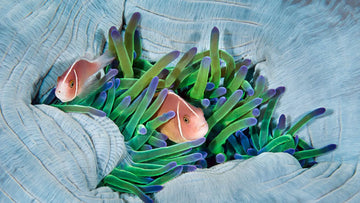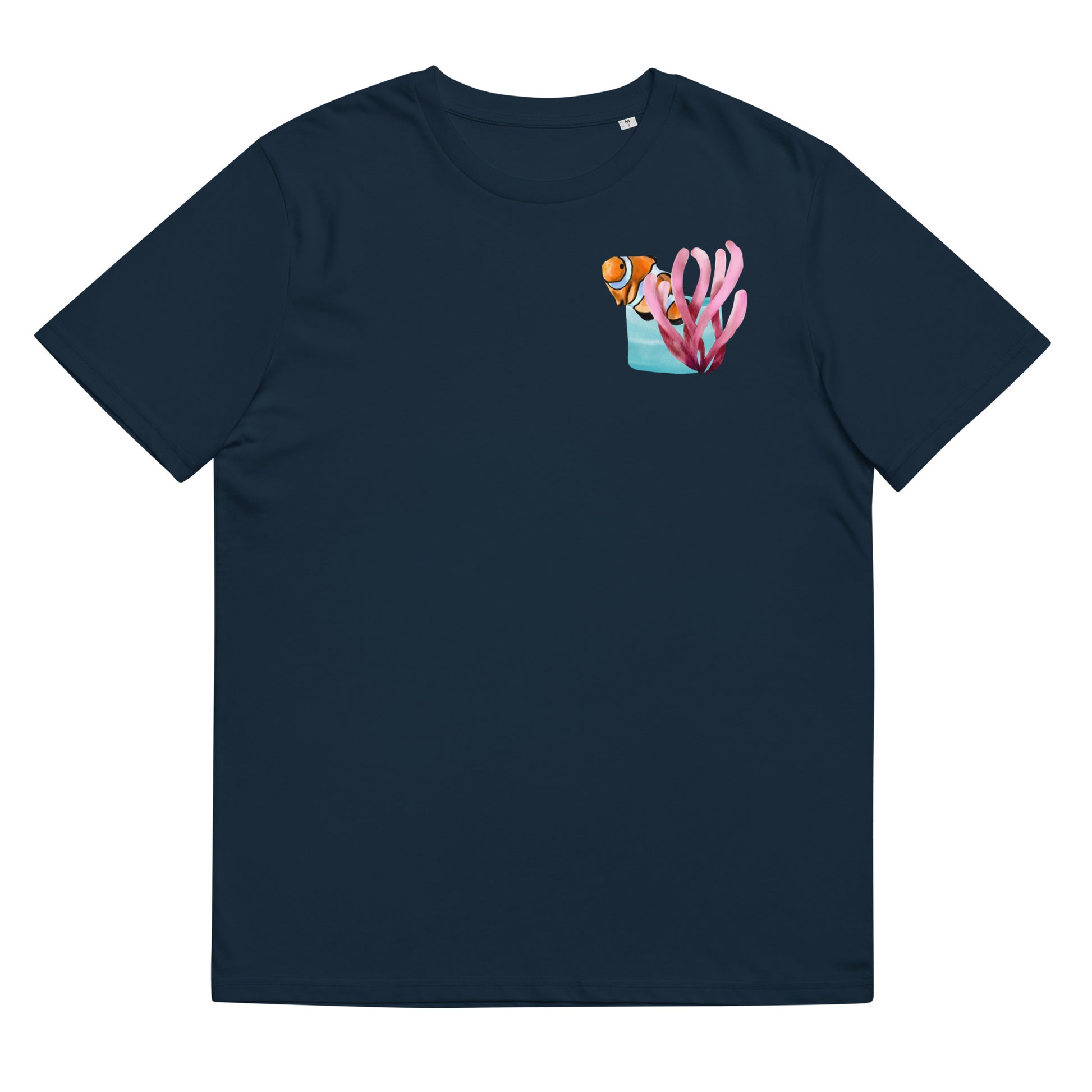For the vast majority, the clownfish is precisely that, THE clownfish, a single species. Specifically, the one that appears in Finding Nemo, right?
In reality, the clownfish belongs to the subfamily Amphiprioninae which includes over 30 different species. Yes, Nemo is not alone. Although some species of clownfish are more common and easier to find than others, there are several rare and unique species that are worth knowing about. We are passionate about them. several clownfish T-shirts so that you too can show that love.
Here are the 7 rarest clownfish species in the world.
1. Fire Clownfish (Amphiprion ephippium)
The clownfish Amphiprion ephippium, also known as the fire clownfish or saddleback clownfish has a uniqueness among clownfish that earns it a spot on this list. This clownfish has a black dot on the rear half of its body that qualifies it for this article on rare clownfish.

Although rare for its distinctiveness, it is actually a quite common clownfish in terms of numbers, and can be found in several countries that make up the Coral Triangle and the eastern Indian Ocean, such as Indonesia, Malaysia, Vietnam, the Andaman Islands, or Thailand.
Original Clownfish T-Shirts - Worldwide Shipping!
SEE MORE CLOWNFISH T-SHIRTS
Like other clownfish, it has a symbiotic relationship with anemones, and the Amphiprion ephippium is found only in the anemones Heteractis crispa, Entacmaea quadricolor and Stichodactyla spp.
2. Maroon Clownfish (Premnas biaculeatus)
The Maroon Clownfish, also known as spine-cheeked anemonefish, Premnas biaculeatus, is special for its unique coloration, with a body of intense red or maroon color and three vertical white stripes. One of the great rarities of this fish is that when males change into females (remember that clownfish are protandrous hermaphrodites, they all start as males, and one of the colony members changes sex when the colony's female dies), they change color, transitioning from intense orange to dark brown.

The Premnas biaculeatus is one of the largest clownfish species, growing up to 15 cm in length. One feature that stands out in these clownfish is their high aggressiveness. They are very territorial and attack other fish that invade their space without hesitation. Another uncommon characteristic among clownfish is that the maroon clownfish has a very diverse diet that includes small fish, crustaceans, and other invertebrates, unlike other clownfish that feed only on zooplankton.
Where can we snorkel or dive with these clownfish? If you want to see them where they are meant to be seen, in their natural environment, you must travel to Indonesia, the Philippines, Malaysia, or Papua New Guinea.
3. McCulloch's Clownfish (Amphiprion mccullochi)
Amphiprion mccullochi, also known as McCulloch's clownfish, is a species of clownfish known for its intense dark color, white mouth, and white dorsal and facial stripes.

Another characteristic of McCulloch's clownfish is its endemism. The Amphiprion mccullochi is found only in shallow tropical waters around Lord Howe Island and the surrounding reefs in the Tasman Sea, off the eastern coast of Australia and in symbiosis with the anemone Entacmaea quadricolor.
4. Pink Skunk Clownfish (Amphiprion perideraion)
Amphiprion perideraion, also known as the pink skunk clownfish, is a species of fish that belongs to the family Pomacentridae. It is a popular and highly sought-after clownfish species, known for its unique appearance and peaceful temperament.

Compared to other clownfish species, the pink skunk clownfish has a distinctive look. It has a body of pale pink or peach color with a white stripe running along its back and a broad white band on its head extending over the eyes. Its fins are also pale, with the dorsal fin edged in black.
The Amphiprion perideraion can be found in the tropical waters of the western Pacific Ocean, including the Philippines, Indonesia, and the Great Barrier Reef in Australia. It is commonly found in shallow and sheltered areas, such as coral reefs and lagoons.
5. Maldives Clownfish (Amphiprion nigripes)
The Maldives clownfish is orange, with a white headband and is distinguished by its rosy snout. It has patterns similar to the previous clownfish but lacks that dorsal stripe. Females can reach a not insignificant length of 11 cm.

Like most clownfish, it is monogamous and a protandrous hermaphrodite, changing sex according to the hierarchy in the group.
It is a tropical fish that lives in coral reefs and in symbiosis with anemones Heteractis magnifica, primarily feeding on algae and zooplankton.
As the name suggests, it can be found in the Indian Ocean, mainly in the Maldives and Sri Lanka, although specimens have also been found in India.
6. Red Sea Clownfish ( Amphiprion bicinctus)
Let's move on to another rare clownfish, well-known among friends who have practiced diving in the Red Sea: the Amphiprion bicinctus. Yes, it's the clownfish you can see in dives like Anemone City, where hundreds of clownfish live peacefully in their anemones.

This clownfish is easily distinguished by its pattern of white and black bands on its dark brownish-yellow body. It is a large clownfish, reaching up to 14 cm in length. It inhabits coral reefs in symbiosis with different anemones such as the bubble-tip anemone (Entacmaea quadricolor) or the leather anemone (Heteractis crispa). In addition to the Red Sea, it can be found in a wide area, crossing the Indian Ocean and reaching the Philippines.
7. Whitetip Clownfish (Amphiprion leucokranos)
 Image by Michael McComb
Image by Michael McComb
Finally, we include this clownfish in the list for its striking and distinct white "cap" on its head, unique among clownfish, and for the possibility of being a hybrid.
The whitetip clownfish is found only in Papua New Guinea and the Solomon Islands, and it is believed to be a hybrid between two clownfish species, the Amphiprion sandaracinos or cherubfish clownfish and the Amphiprion chrysopterus, golden tail clownfish due to their similar distribution in Papua New Guinea.























